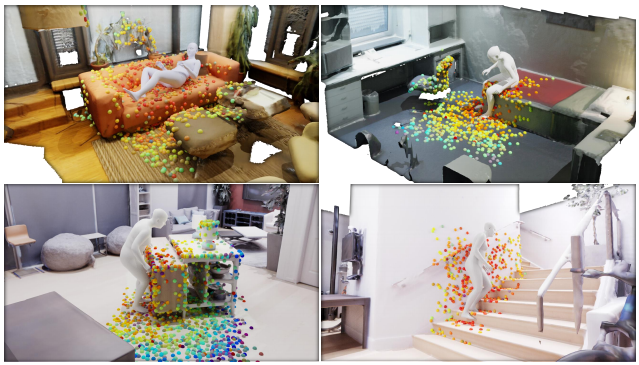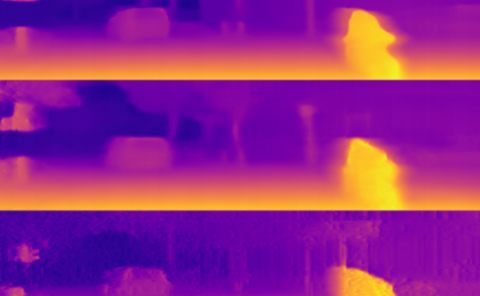Generating Person-Scene Interactions in 3D Scenes
PubDate: Aug 2020
Teams: ETH Zurich, Max Planck Institute for Intelligent Systems
Writers: Siwei Zhang, Yan Zhang, Qianli Ma, Michael J. Black, Siyu Tang
PDF: Generating Person-Scene Interactions in 3D Scenes

Abstract
High fidelity digital 3D environments have been proposed in recent years; however, it remains extreme challenging to automatically equip such environment with realistic human bodies. Existing work utilizes images, depths, or semantic maps to represent the scene, and parametric human models to represent 3D bodies in the scene. While being straightforward, their generated human-scene interactions are often lack of naturalness and physical plausibility. Our key observation is that humans interact with the world through body-scene contact. To explicitly and effectively represent the physical contact between the body and the world is essential for modeling human-scene interaction. To that end, we propose a novel interaction representation, which explicitly encodes the proximity between the human body and the 3D scene around it. Specifically, given a set of basis points on a scene mesh, we leverage a conditional variational autoencoder to synthesize the distance from every basis point to its closest point on a human body. The synthesized proximal relationship between the human body and the scene can indicate which region a person tends to contact. Furthermore, based on such synthesized proximity, we can effectively obtain expressive 3D human bodies that naturally interact with the 3D scene. Our perceptual study shows that our model significantly improves the state-of-the-art method, approaching the realism of real human-scene interaction. We believe our method makes an important step towards the fully automatic synthesis of realistic 3D human bodies in 3D scenes. Our code and model will be publicly available for research purpose.



